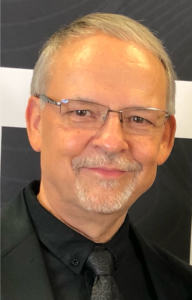 Beryl Jantzi is director of stewardship education at Everence.
Beryl Jantzi is director of stewardship education at Everence.
Tikkun olam
We’re all familiar with the concept of peacemaking. But have you considered peace giving? Looking back over Old Testament practices and Jewish history, we come across an ancient concept called “tikkun olam” which means repairing the earth. This concept first shows up in the Mishnah, which is a Jewish commentary of writings that was formally organized around 200 AD. Many rabbinic writings from previous generations are included in this work. Tikkun olam is a call to righteousness and social justice. It’s rooted in the broader emphasis of shalom, which, along with pursuing peace, means to make whole or complete.
Ties to generosity
Tikkun olam embodies the spirit of giving. The well-being of humankind is one of the key elements of repairing the world. Helping those who are in need is worshipful work. Tikkun olam, in practical terms, emphasized having compassion for all people. Even though this was a teaching and practice within Judaism, they understood that generosity of this nature extended beyond their own religious community. It included volunteering time as well as giving financially.
Reconciliation through giving
Typically, when we talk about individual giving today, it centers around giving to the local church and other faith-based charitable causes in our communities. If there’s money left over, we think about giving to the denomination, conference and mission organizations. As we read the words of Jesus in the New Testament, his primary emphasis for giving and serving is directed to the poor and those living on the margins of society. Caring for orphans, widows and foreigners was close to the heart of Jesus and the early church (Mark 10:21; 1 Corinthians 16:1-4).
Tikkun olam is an acknowledgment that we live in a broken world that needs repairing. As a people called by God to follow Jesus, the ancient practice of tikkun olam is as relevant as ever. We must take seriously the mandate to be engaged as agents of healing and reconciliation in word, deed and through our priorities of generosity.
Barbara Fullerton has written about six best practices for congregational stewardship. The first five emphasize internal programing, and the final one is entitled, “Engagement in Social Justice and Peace Concerns.” To identify as members of the peace church tradition is to give in ways that address past wrongs and current brokenness. This is our calling, to participate in repairing a broken world which God still loves and seeks to redeem.
For more information about “Year-Round Congregational Stewardship: Six Best Practices,” go to: https://www.everence.com/resources/stewardship-education
Are you looking for a way to provide a faithful testimony to the world regarding Jesus’ way of nonviolence and peace? This tax season, learn more about Mennonite Church USA’s Church Peace Tax Fund:

